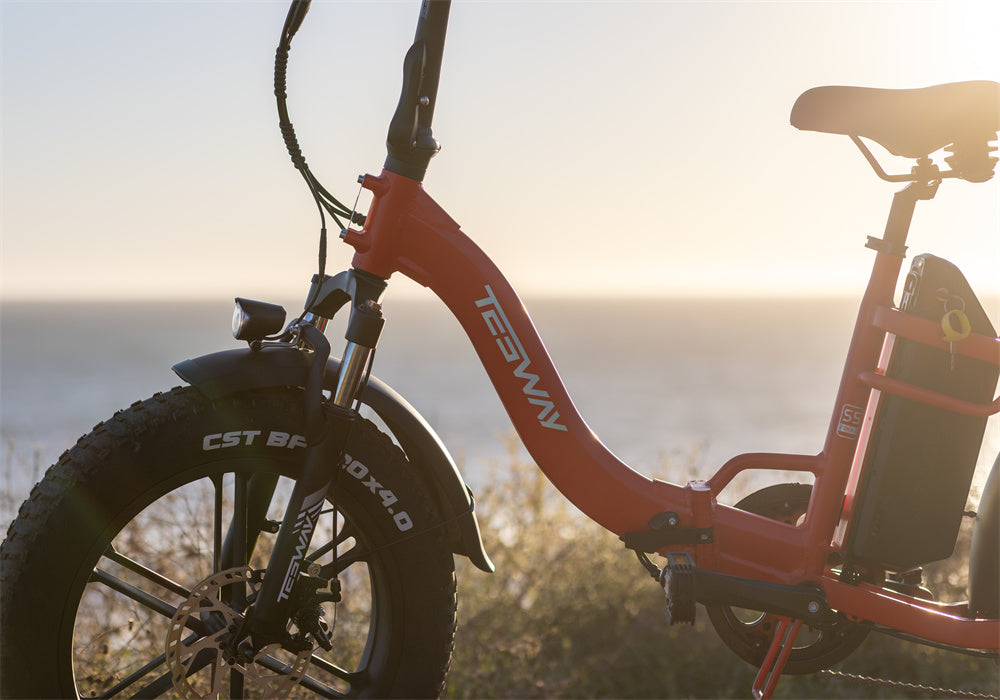Cycling is not just a mode of transport but a way of life for many. As cyclists, we need to ensure our safety and the safety of others on the road. One of the essential ways to communicate while biking is through hand signals. eanings, and the importance of their use.
How Were the Universal Hand Signals for Biking Created
The creation of universal hand signals for biking dates back to the early 20th century. As automobiles began to dominate the roads, the need for a standardized way for all road users to communicate became evident. This necessity birthed the idea of hand signals for cyclists, allowing them to indicate their intentions clearly to other road users.
Hand signals were primarily inspired by the signals used by motorists before the invention of electric turn signals. Cyclists adapted these signals to suit their needs, ensuring that they could convey their actions without speaking.
Over time, these gestures became universally recognized, providing a consistent method of non-verbal communication for cyclists worldwide.
The history of hand signals is not just about practicality but also about the growing culture of cycling safety. Early cycling clubs and organizations played a significant role in promoting these signals, incorporating them into training and safety guidelines.
Today, hand signals are a fundamental aspect of cycling etiquette, emphasizing the importance of communication and mutual respect on the road.

What Are the Basic Hand Signals a Cyclist Uses
When you're out on the road, it's crucial to communicate your intentions to drivers and fellow cyclists.
Left Turn Signal
Extend your left arm straight out to your side, parallel to the ground. This indicates that you intend to make a left turn. It's a simple yet effective way to show that you are about to change direction, giving drivers and other cyclists ample time to adjust their path.
Right Turn Signal
There are two ways to signal a right turn. The first method is to extend your left arm out and then bend it at the elbow, so your forearm points upward. The second, more straightforward method is to extend your right arm straight out to the side. Both signals are widely accepted, but the straight right arm is often considered more intuitive.
Stopping or Slowing Down
To signal that you are stopping or slowing down, extend your left arm out and bend it downward at the elbow, with your palm facing backward. This lets those behind you know that you are reducing your speed or coming to a stop. This signal is crucial in preventing rear-end collisions and ensuring a smooth flow of traffic.
Hazard Signal
If there's a hazard on the road, such as debris or a pothole, point to it with the relevant hand (left or right). This helps inform other cyclists behind you to avoid the obstacle. By indicating potential dangers, you contribute to a safer cycling environment for everyone.
Group Ride Signals
In group rides, additional signals are used to maintain safety and coordination. For example, a hand wave behind the back can indicate a need to move to single file, or a raised hand can signal the group to stop. These extra gestures are essential for seamless communication in larger groups.
a single-file formation, often used on narrow roads or in high-traffic areas.
- Double File Signal: Raise both hands and extend two fingers on each hand. This signals riders to form pairs, riding two abreast, typically used when the road is wide and traffic is light.
- Pull Off Signal: Sweep one hand from front to back, indicating that the rider in front should move to the back of the group. This is commonly used in paceline riding to rotate the lead position and share the workload.
- Road Hazard Signal: Point down at the road with either hand and circle your finger to indicate a pothole, debris, or other road hazards. This alert helps riders behind you to avoid potential dangers.
- Stop Signal: Raise an open palm facing backward, signaling the group to come to a halt. This is crucial for ensuring that all riders stop together safely.

Do Electric Bikes Have Brake Lights
Many electric bikes come equipped with brake lights, which are typically integrated into the rear of the bike to enhance visibility and safety. These lights function similarly to those on cars, automatically illuminating when the brake levers are engaged to signal to other road users that the rider is braking.
A standout feature of the Tesway eBike is its sensitive brake LED light. Combined with advanced mechanical disc brakes, Tesway electric bicycle ensure optimal stopping power and safety. Utilizing a reliable brake light system like the one on Tesway electric bikes can significantly improve your visibility and safety on the road.
What Do Bikers' Hand Signals Mean
Understanding the meaning behind these hand signals is essential for safety. Each gesture conveys a specific message to ensure smooth and safe navigation on the roads:
Left Turn Signal: "I'm turning left." This signal is crucial when preparing to cross traffic lanes or make a significant directional change.
Right Turn Signal: "I'm turning right." Right turns can be tricky, especially in busy intersections, making this signal vital.
Stopping or Slowing Down: "I'm reducing my speed or stopping." Sudden stops can catch others off guard, so signaling your intentions helps prevent accidents.
Hazard Signal: "Watch out for an obstacle ahead." Pointing out hazards helps fellow cyclists navigate safely around obstacles.
Using these signals effectively helps prevent accidents and ensures a harmonious flow of traffic. It's not just about knowing the signals but also about executing them correctly and timely.
This practice not only enhances personal safety but also promotes a culture of awareness and cooperation among all road users.

Do You Use Hand-Signaling When You Ride Bikes
Using hand signals while biking is crucial, yet not every cyclist practices this habit. Jane, a daily commuter, She shared her story on a cycling forum:
"I used to think hand signals were unnecessary until one day, while biking to work, I narrowly avoided a collision with a car. That incident was a wake-up call. Now, I never ride without using hand signals. They’re a small effort that makes a huge difference in safety."
Another story comes from Mark, an avid cyclist and weekend warrior. He recalls, "During a group ride, one of our members didn't signal a stop, causing a pile-up. It was a lesson for all of us. Now, we make it a point to educate new riders about the importance of hand signals."
And then there's Zack, who enjoys biking with his family. He notes, "Teaching my kids hand signals was one of the first things we did. It's about setting good habits early. They know that signaling can prevent accidents and keeps everyone safe."

Conclusion
Hand signals are an indispensable part of cycling, fostering safe communication between cyclists and other road users. Whether you're a seasoned cyclist or a beginner, incorporating these signals into your riding habits can significantly enhance your safety and that of others. So, next time you're out on your bike, remember to use your hand signals – they could save lives.







Share:
Spend Happy Time with Your Fluffy Buddy: Safe Ways to Bike with Your Dog
Measure your standover height for a comfortable electric bike